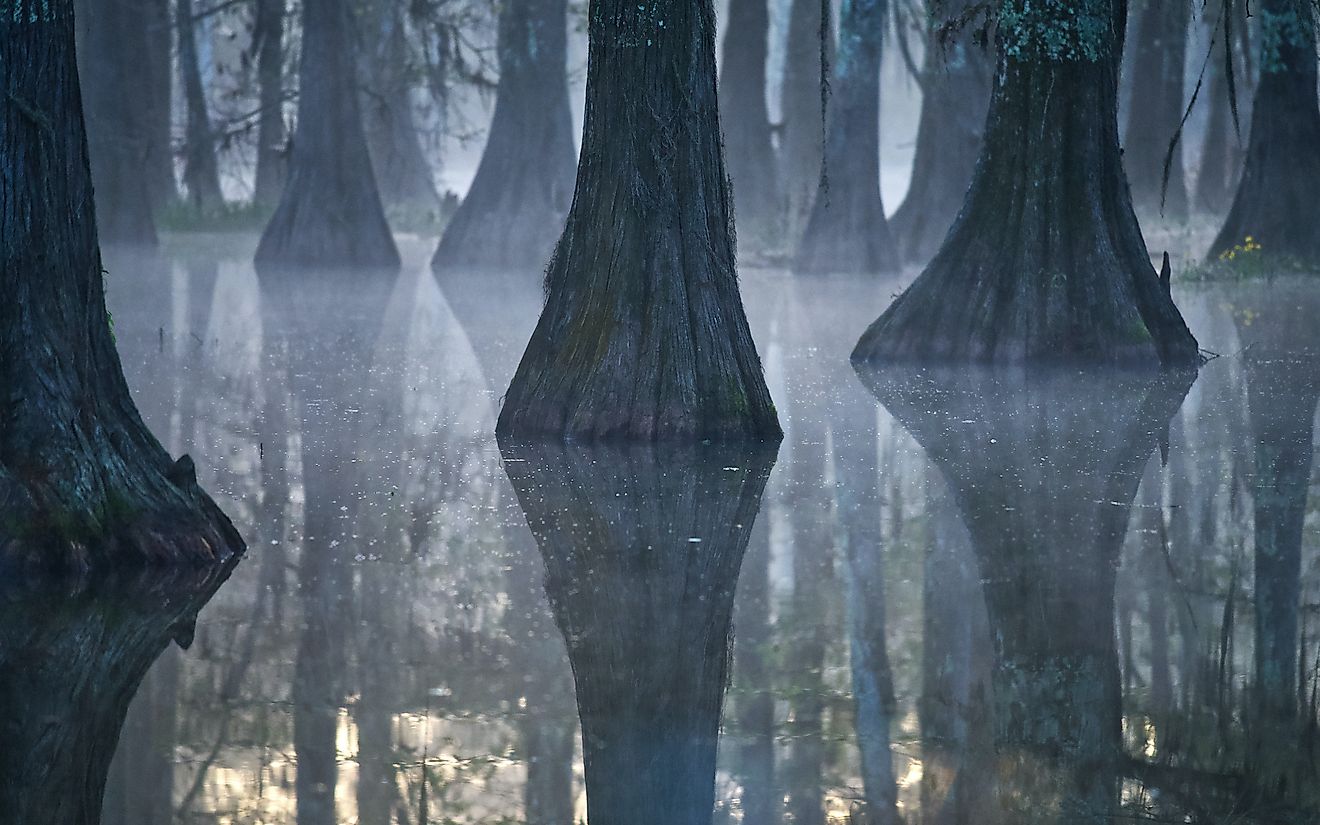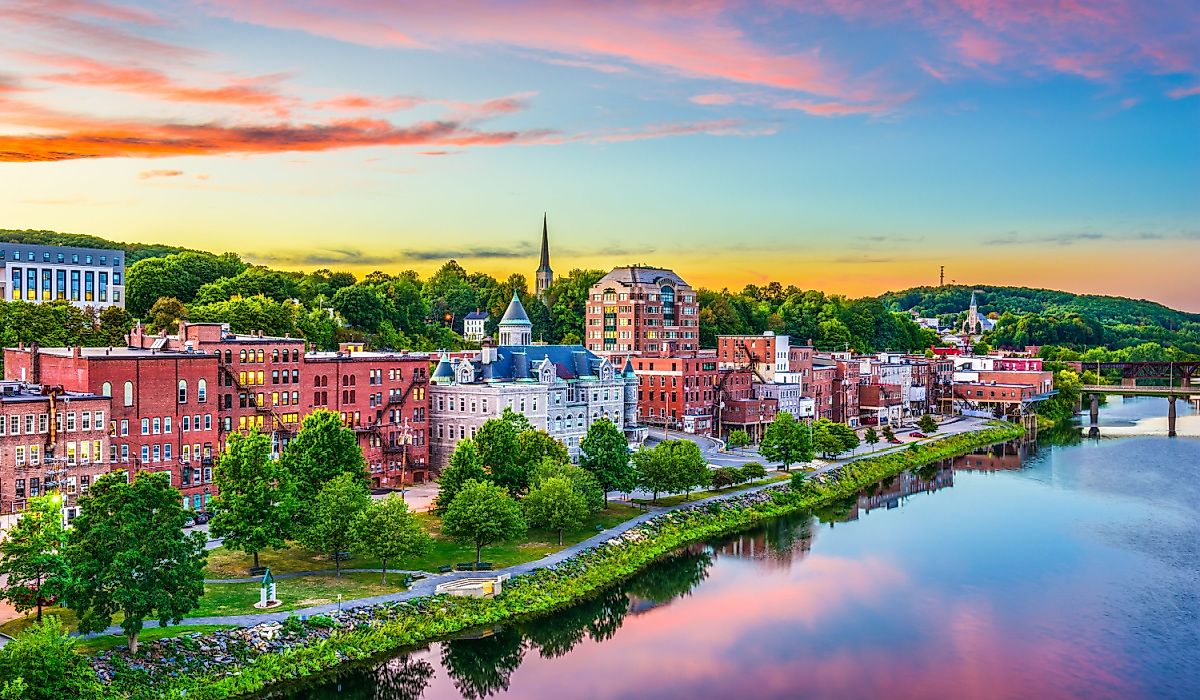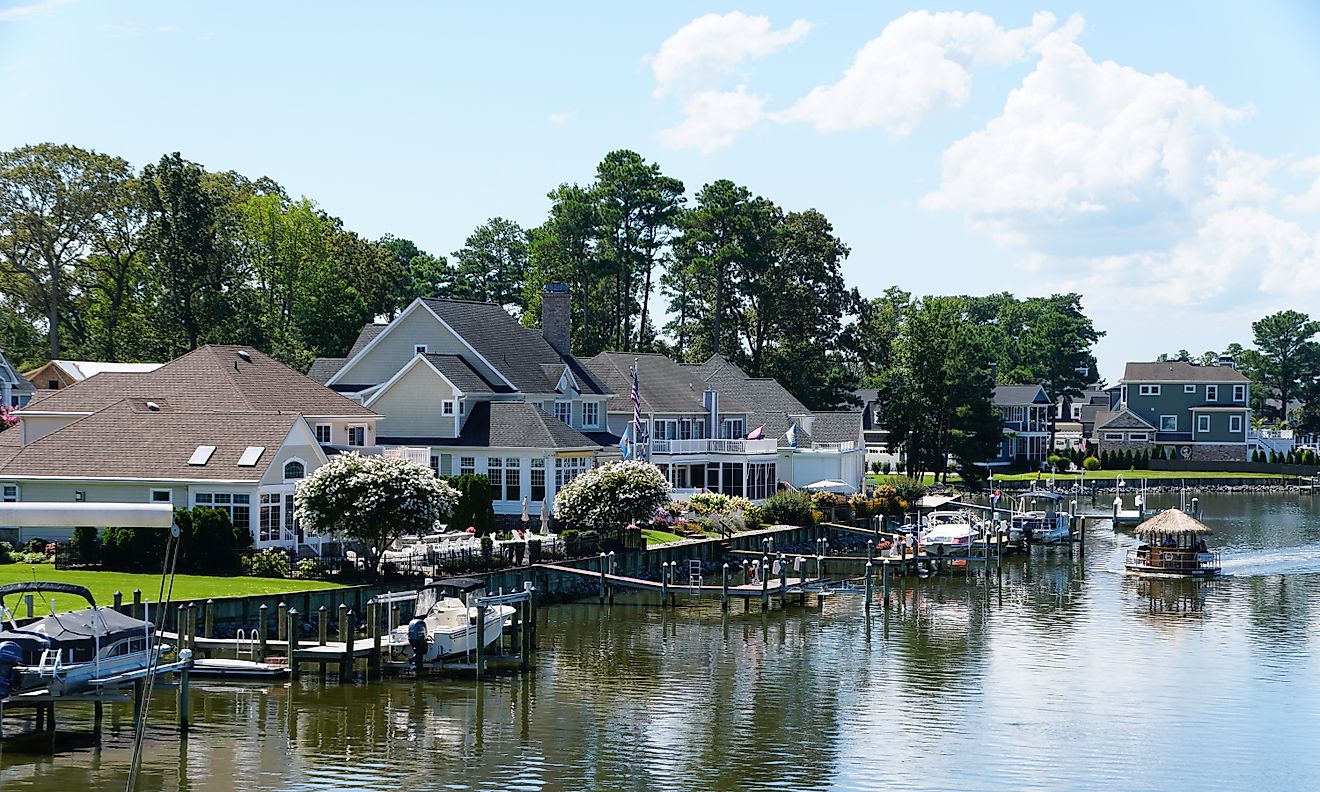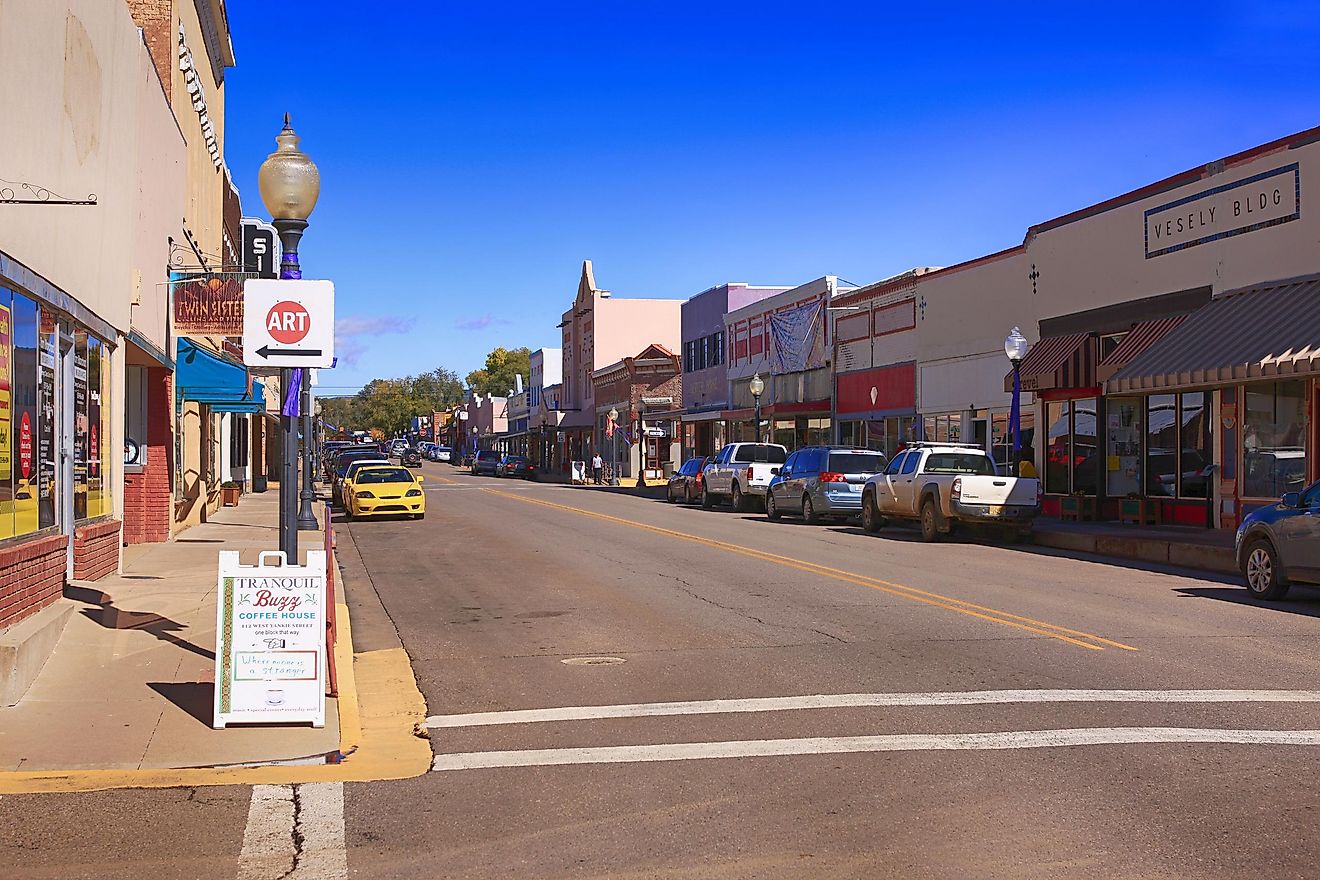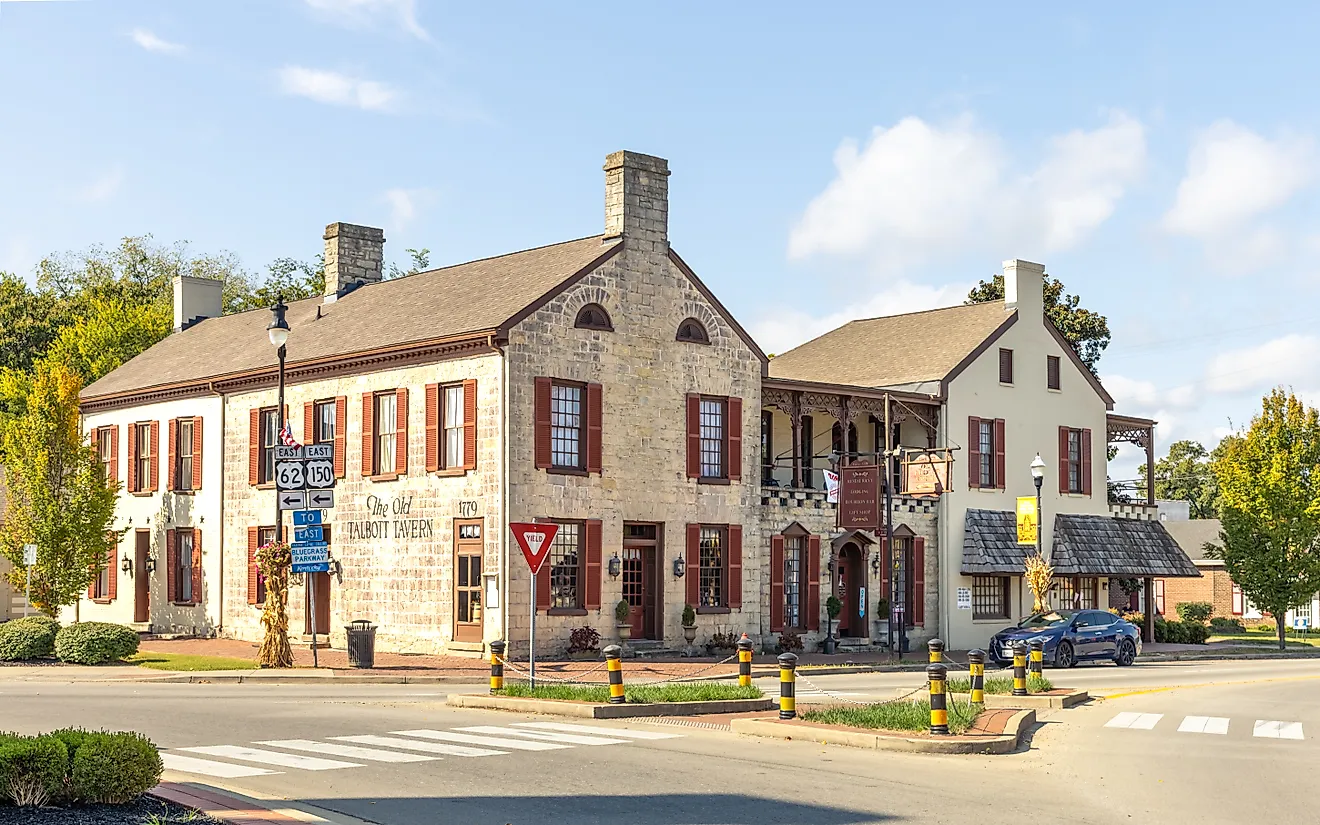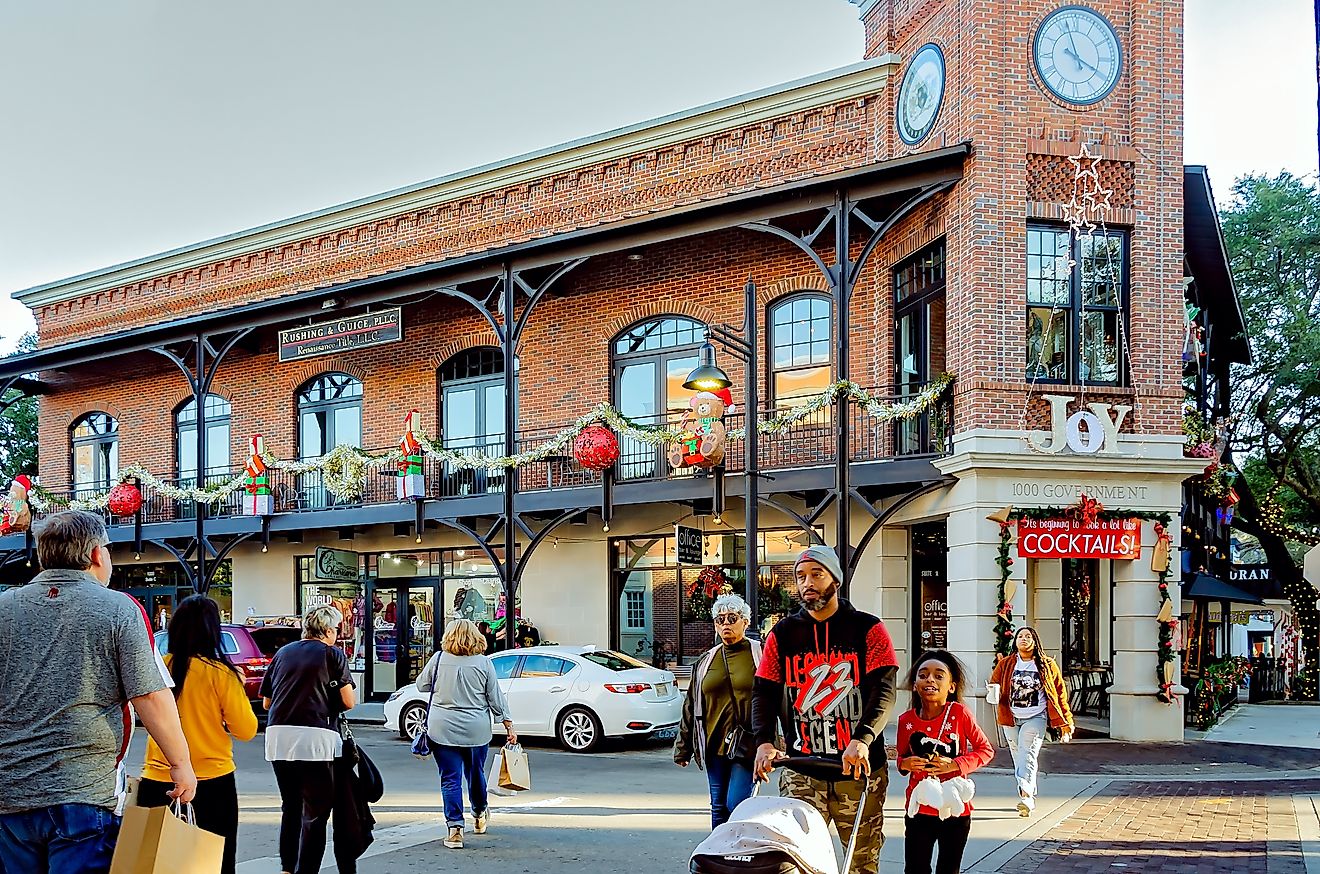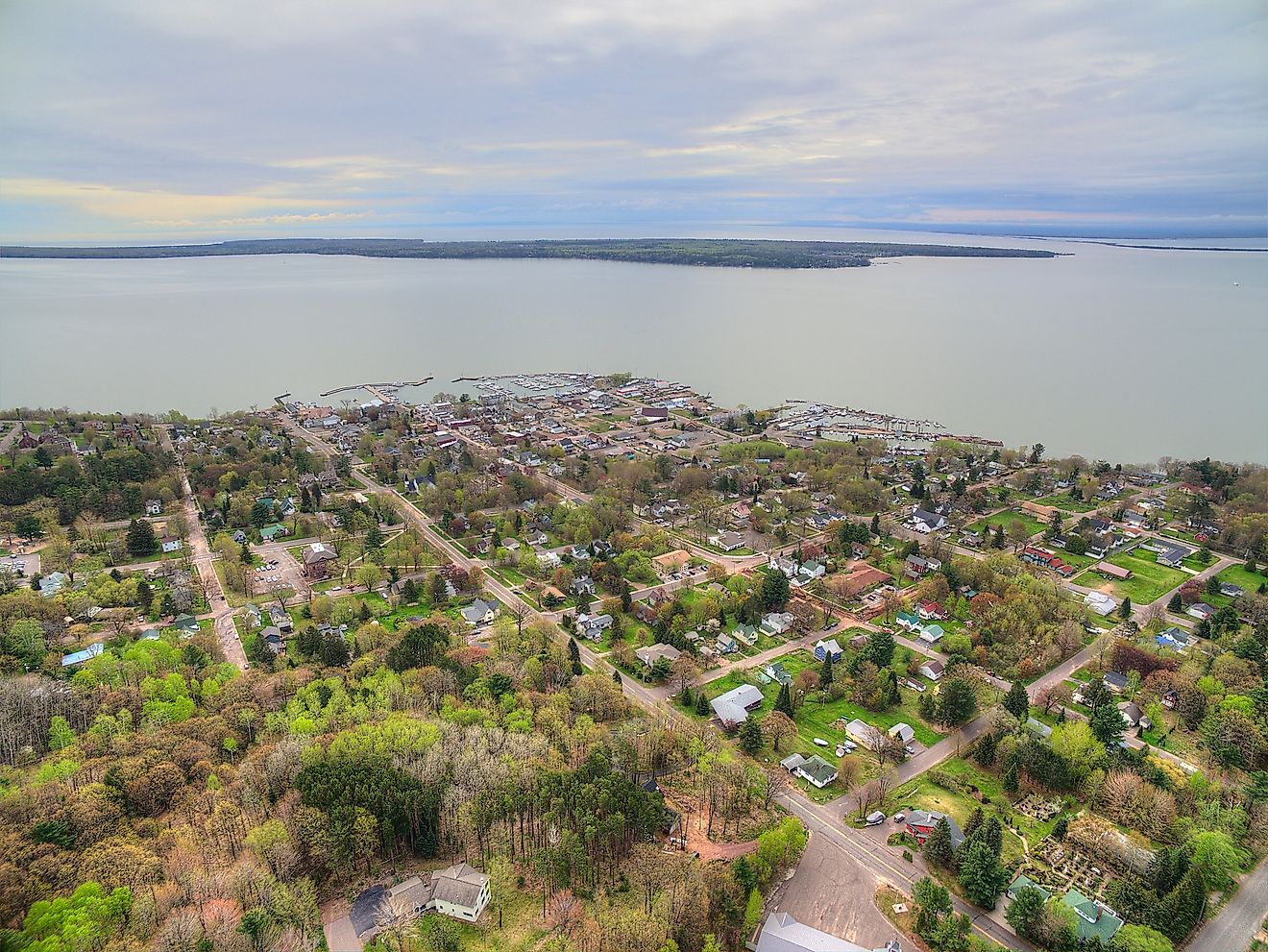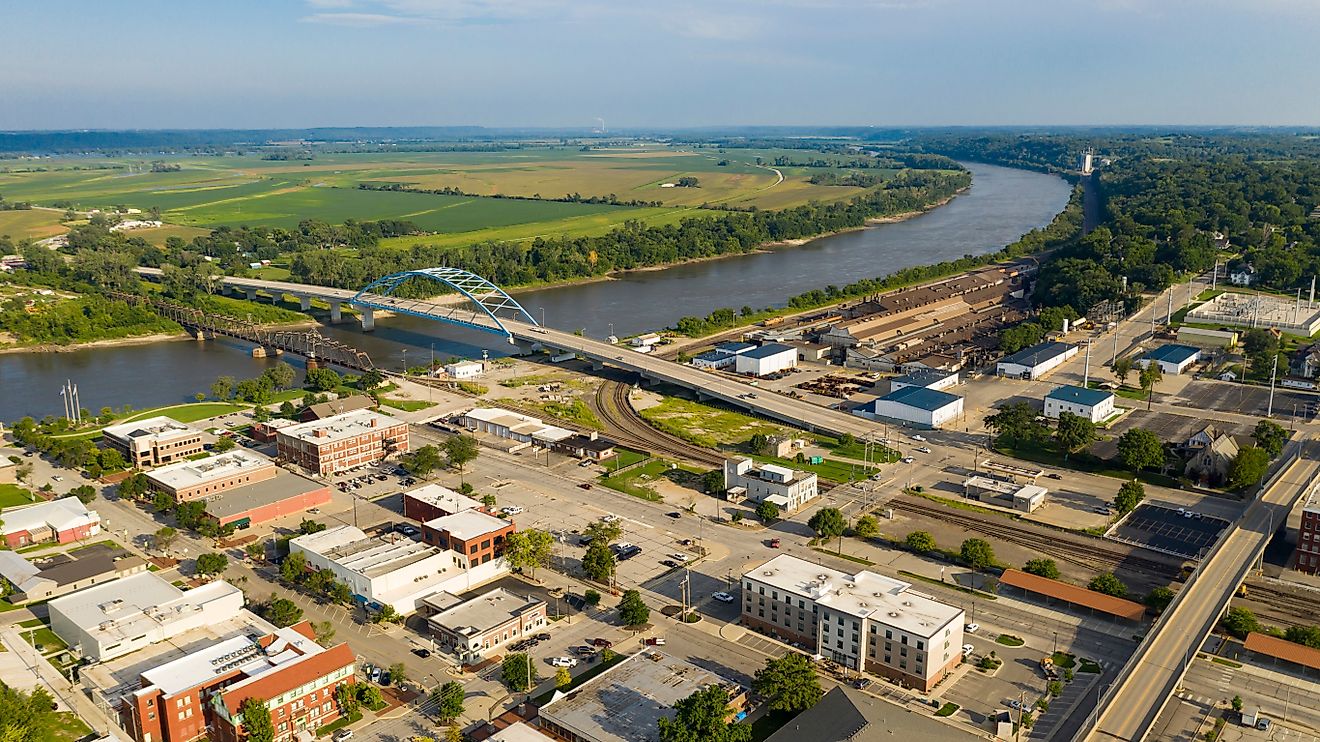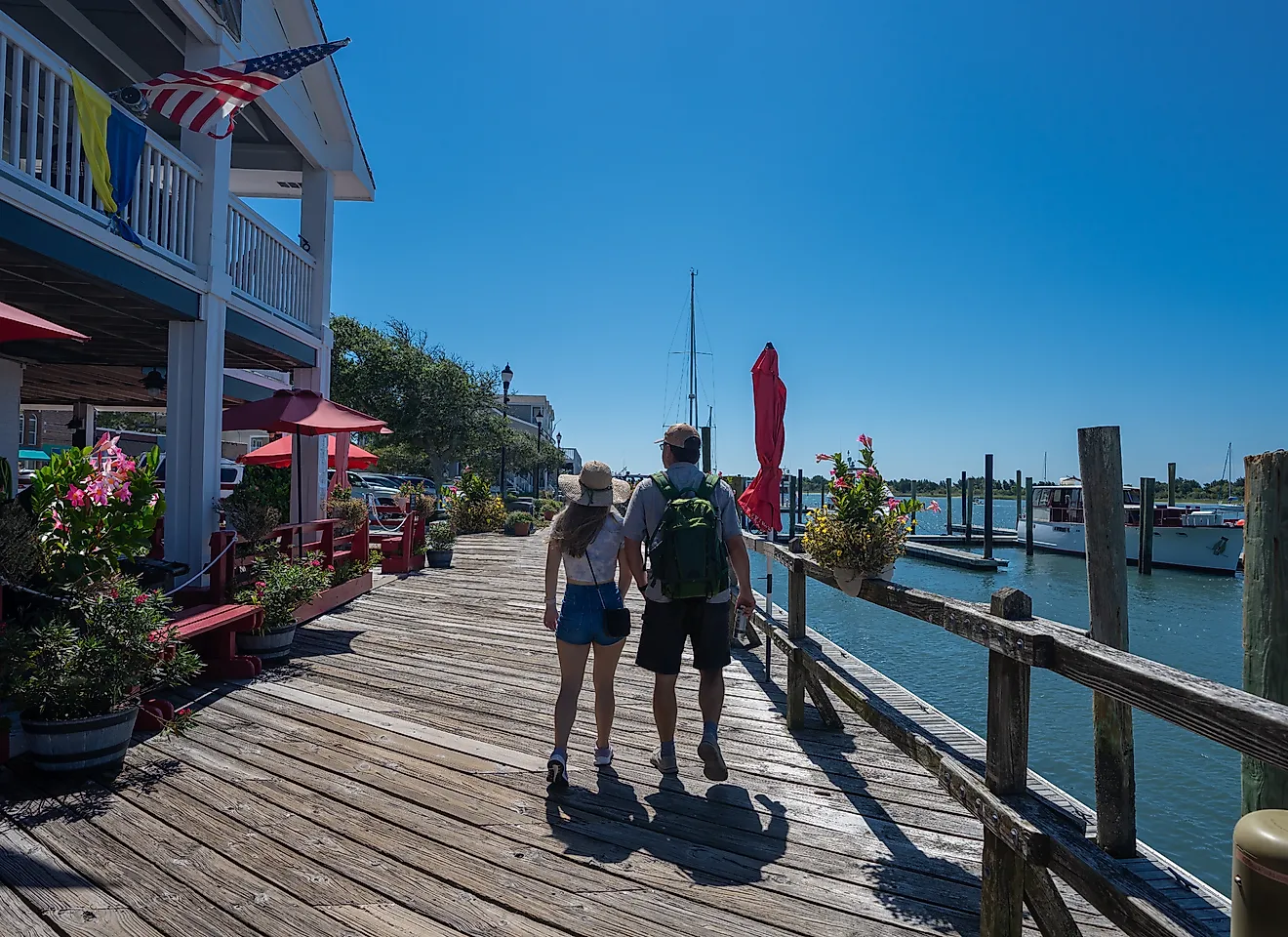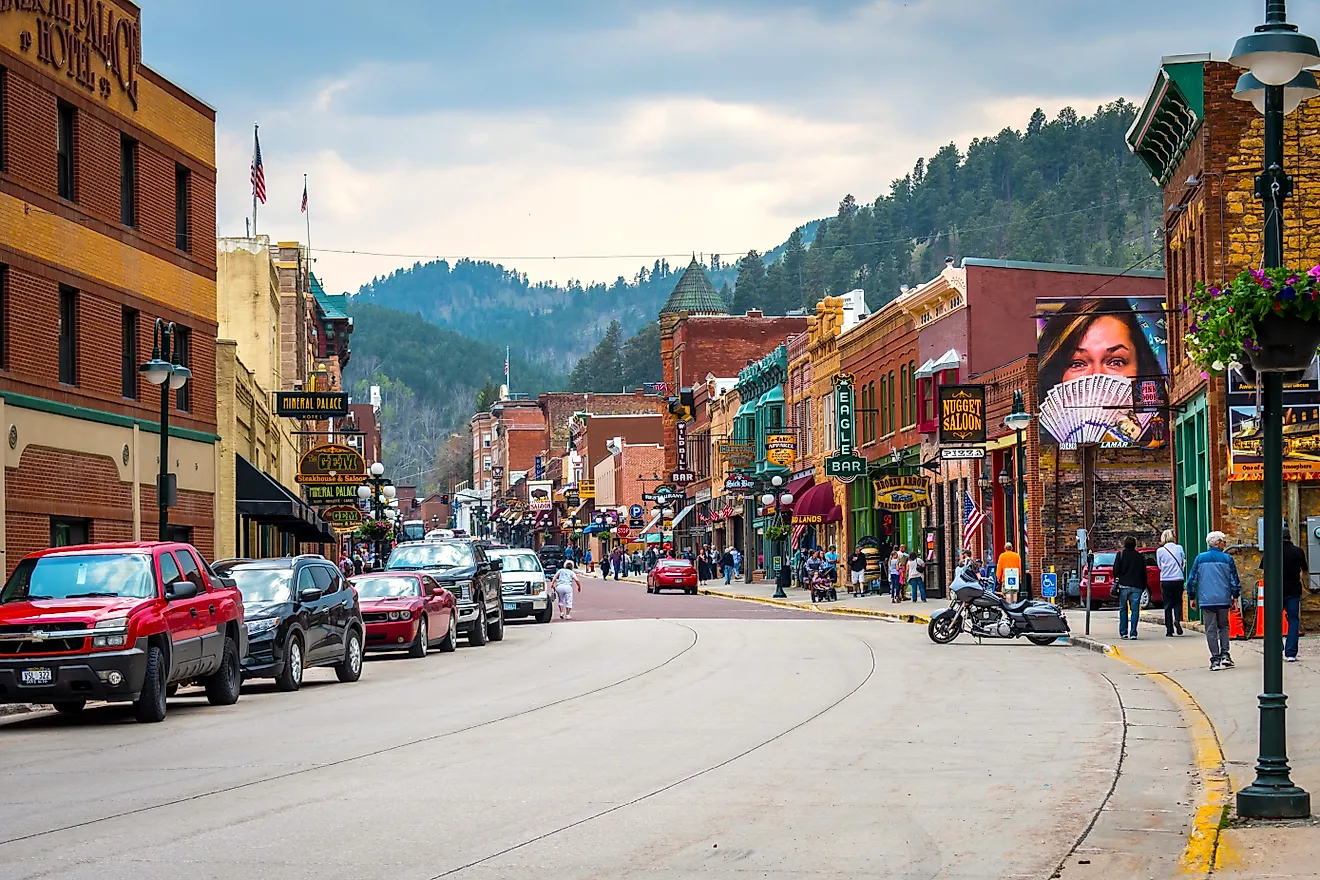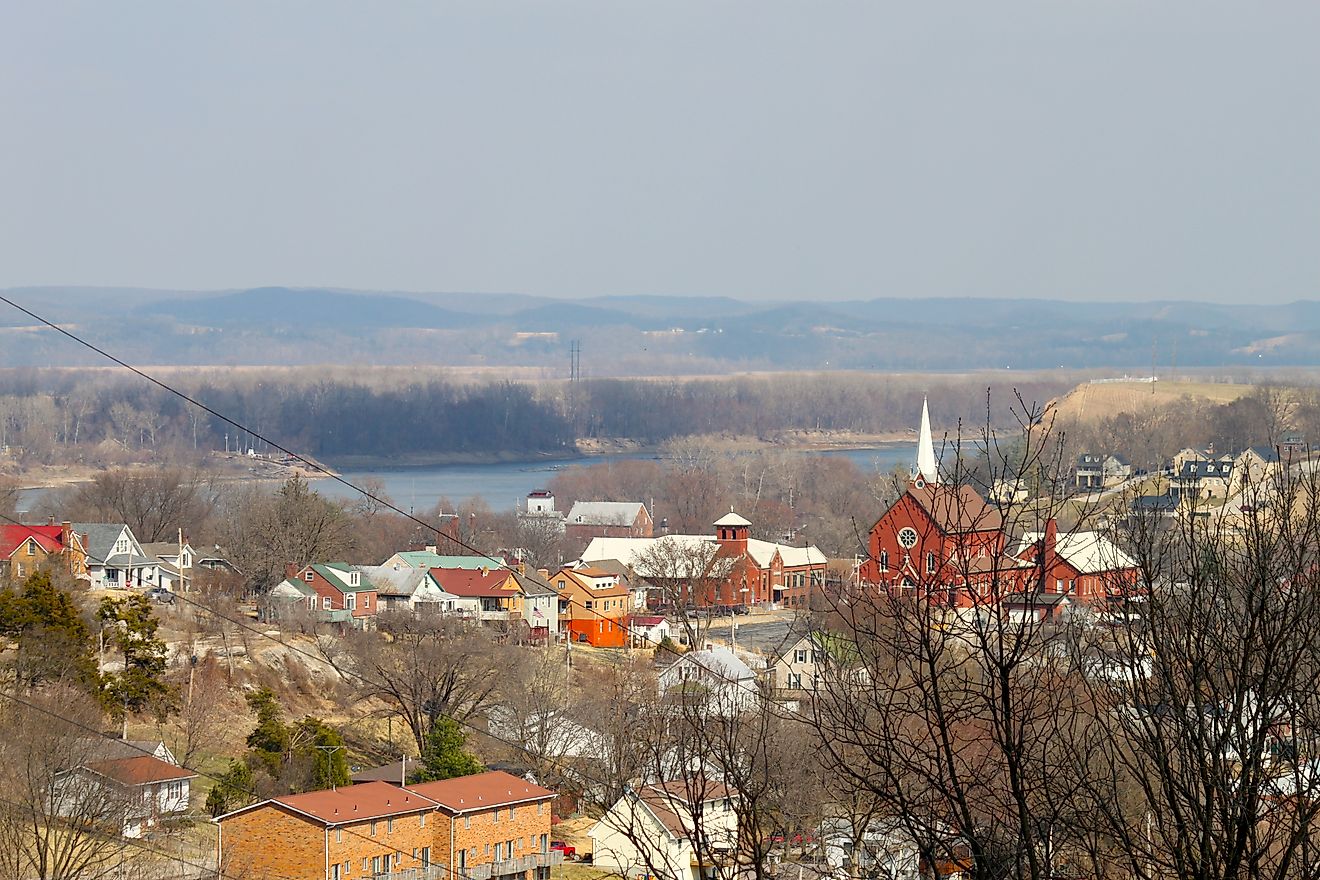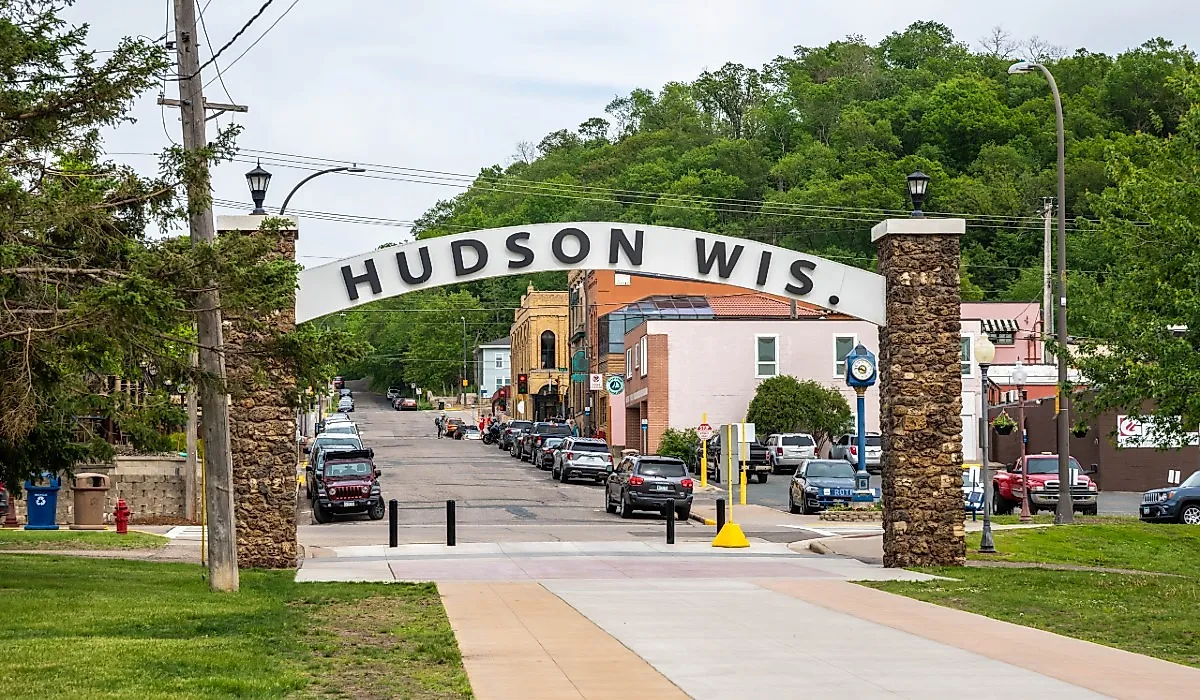
11 Of The Most Welcoming Towns In Wisconsin
Measure a Wisconsin welcome by how fast someone hands you a lawn chair. In these towns, strangers are folded into the schedule, whether it’s a Friday fish fry that overruns the church basement or a volunteer line setting up snow fencing before dawn. The rituals aren’t staged; they’re maintained. You’ll see mail “jumpers” leaping off a moving boat in Lake Geneva and apple crates stacked for Bayfield’s October rush.
This list of 11 towns spotlights places where the welcome is built into the operating system: fairs run by neighbors, trails kept clear by scout troops, concert stages wired by the local electrician. Expect hot air balloons over the St. Croix in Hudson, Swiss choruses in New Glarus, and state-fair grandstands in Chippewa Falls. The point isn’t spectacle; it’s participation. If you stay for a weekend, someone will put you to work, then send you home with pie.
Cedarburg
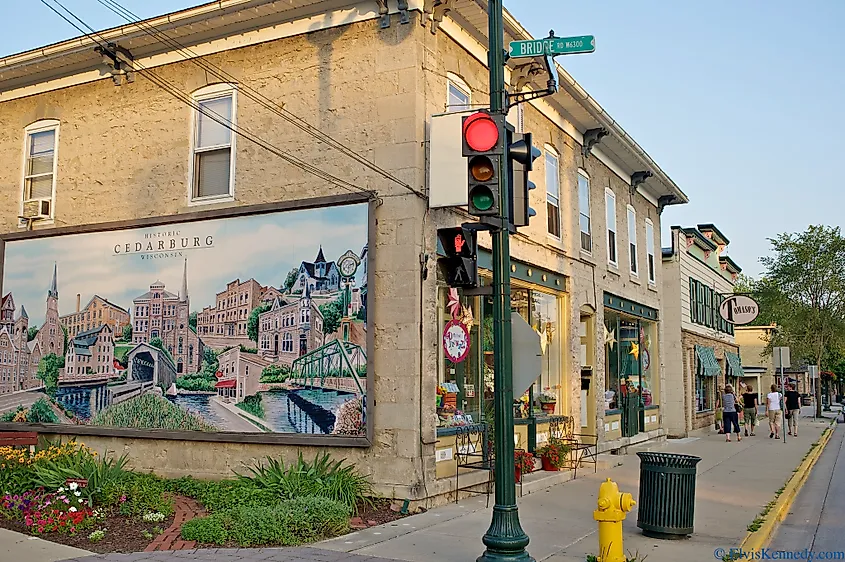
Cedarburg’s past isn’t just preserved, it’s alive. This small town in Ozaukee County has the rare distinction of having nearly all its 19th-century limestone buildings intact and in use, many of them clustered along Washington Avenue. The former woolen mill now houses shops and art galleries, while the old firehouse has become a history museum. Cedarburg was also home to one of Wisconsin’s last remaining covered bridges, which still stands just north of town and serves as a local picnic spot, wedding photo site, and de facto welcome sign. It’s not nostalgia, it’s daily life.
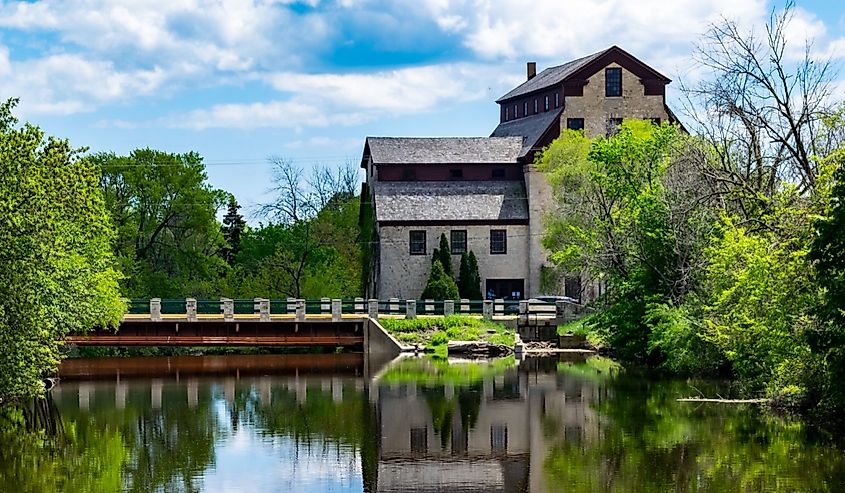
Visitors tend to linger. Cedar Creek Settlement, with its stone winery, Cedar Creek Pottery, and Amy’s Candy Kitchen, is a prime example of a modern business community inside original 1860s walls. The Stagecoach Inn offers rooms just steps from the main drag. Festivals are constant and community-driven: the Strawberry Festival in June draws crowds for fresh berry pies and juried art, while Winter Festival brings bed races down ice-covered streets.
Lake Geneva
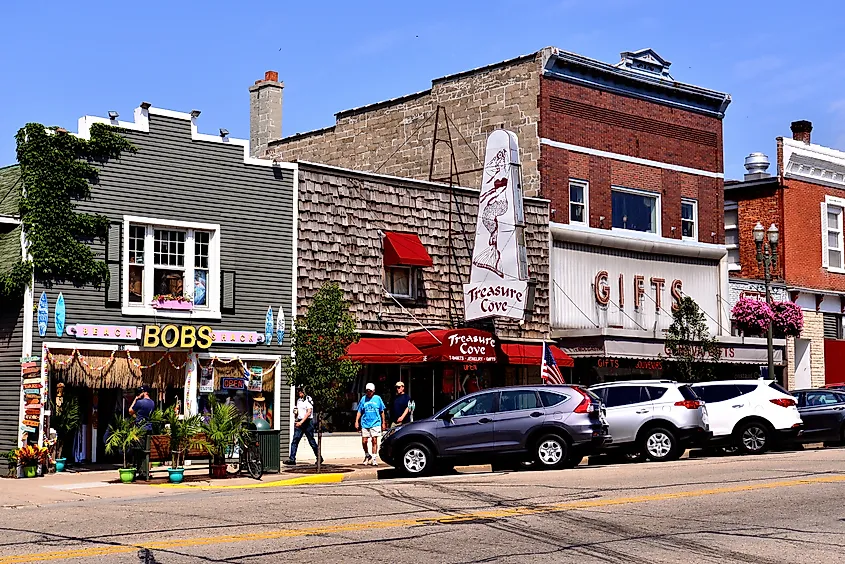
Mail carriers leap from moving boats in Lake Geneva. It’s the only place in the U.S. where mail is still delivered by boat with onboard “jumpers,” a practice dating back to 1916. The lake itself, clear, spring-fed, and ringed by historic mansions, is the center of the town’s rhythm. A public footpath called the Geneva Lake Shore Path cuts directly through private estates, a rare case of guaranteed shoreline access that began as a 19th-century legal obligation and remains strictly observed.
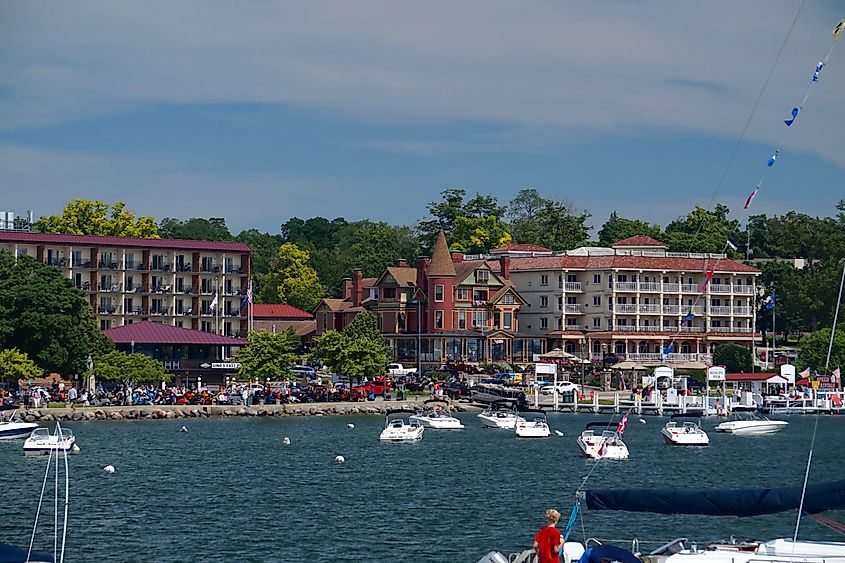
Lake Geneva’s core is compact and active. Simple Café offers seasonal dishes using produce from their farm, with lines out the door on weekends. The Riviera Ballroom, a 1930s Mediterranean Revival landmark, anchors the lakefront and hosts weddings and public events. Yerkes Observatory, once home to the world’s largest refracting telescope, reopened with guided tours and architecture talks. Big Foot Beach State Park provides lake access without the crowding, its wooded trails and quiet shoreline are overlooked by most day visitors. Despite the tourist economy, Lake Geneva’s tone remains local-first. Residents volunteer for Venetian Fest logistics, sponsor summer concerts in Flat Iron Park, and fund preservation of lakeside structures.
Baraboo
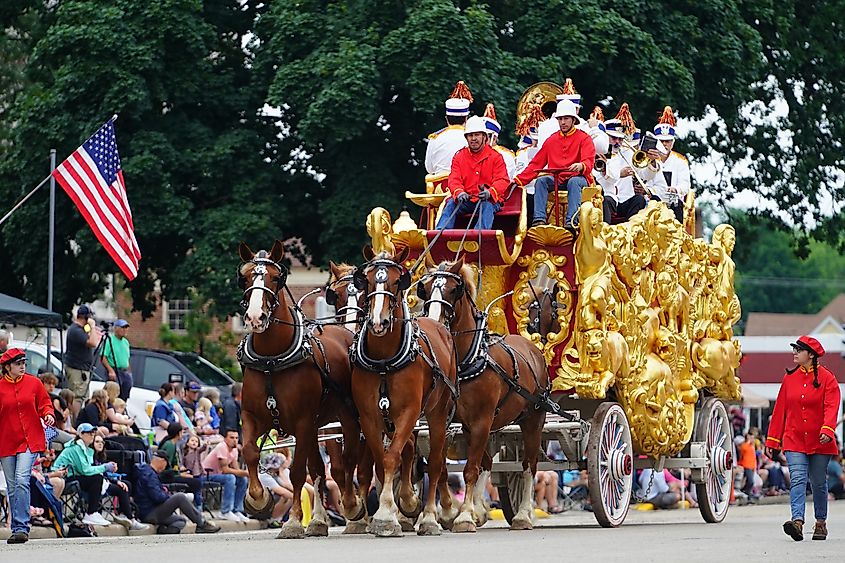
Baraboo is the birthplace of the Ringling Brothers, but its relationship to the circus was more than symbolic. The brothers ran their traveling show from Baraboo for decades, and the town’s rail yards once saw elephants and performers load in each spring. Today, that legacy continues at Circus World, a museum and performance site on the original winter quarters. It’s not a nostalgia play, it’s a functioning institution that runs daily big-top shows in summer, with wagons and costumes restored to operational use.
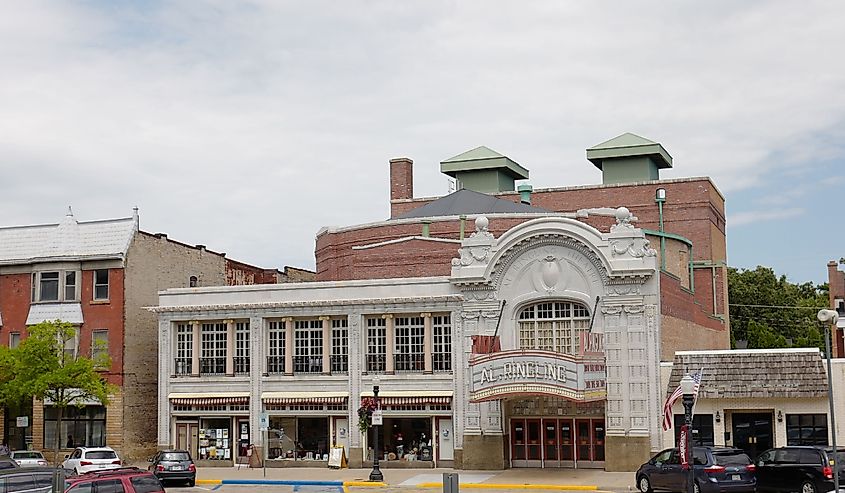
The town’s center is built around the Sauk County Courthouse, with businesses arranged in a true square. The Al. Ringling Theatre, a 1915 opera house funded by one of the brothers, still shows films and hosts live performances. Coffee Bean Connection on 3rd Avenue roasts in-house and keeps irregular hours, but locals rely on it anyway. The Baraboo Range, just south of town, is an ancient quartzite formation that creates a basin of microclimates, Devil’s Lake State Park sits inside it, with ice-age bluffs and a lake framed by trails like Balanced Rock and East Bluff.
Sturgeon Bay
Sturgeon Bay is split in two by the shipping canal that connects Lake Michigan to Green Bay, making it the only working ship canal in the state. The Michigan Street Bridge, a steel truss “tanker turntable,” still lifts for commercial traffic. This is not a re-created harbor; it’s a port where 1,000-foot freighters dock in winter for repair. The working waterfront defines the town’s layout and culture, shipbuilders, tug crews, and welders mix with tourists daily.
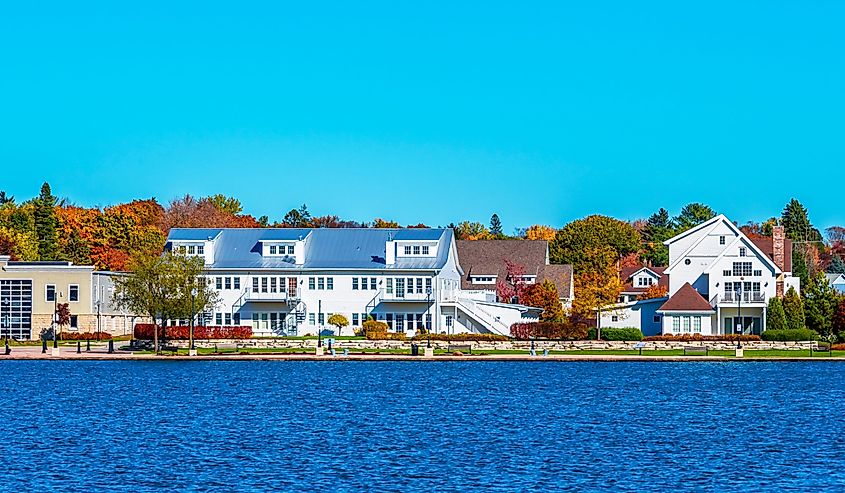
The Maritime Museum sits beside the bridge and includes a 10-story lighthouse-shaped tower with panoramic views of shipyards and dry docks. Across the canal, Otumba Park has a public beach, shaded picnic areas, and a playground close enough to hear boat horns. The Steel Bridge Creative Foundation, co-founded by musicians with ties to the town, hosts the Steel Bridge Songfest annually, performers write and record songs inspired by the town’s infrastructure and past. Kick Coffee on 3rd Avenue serves espresso and panini beside local art displays, while Get “Real” Cafe makes daily vegan soups and wheat-free baked goods.
Hudson
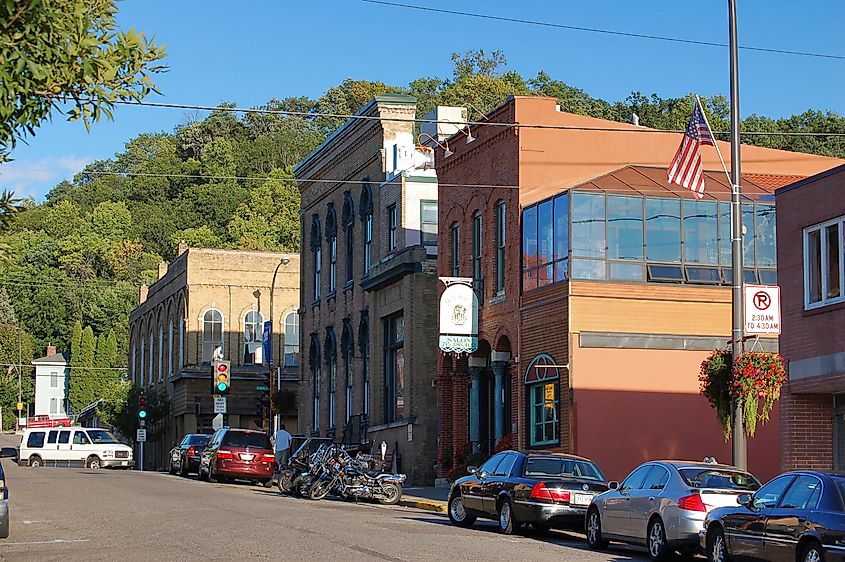
Hudson sits on a crook of the St. Croix River, just before it widens into Lake St. Croix. The town’s riverfront orientation shaped its identity early, first as a steamboat stop, then as a lumber hub, and that river-centered layout still guides its rhythm. The dike road along Lakefront Park is where people gather for hot air balloons in February and fireworks in July. In winter, ice shanties appear offshore; in summer, excursion boats dock beside picnic shelters.
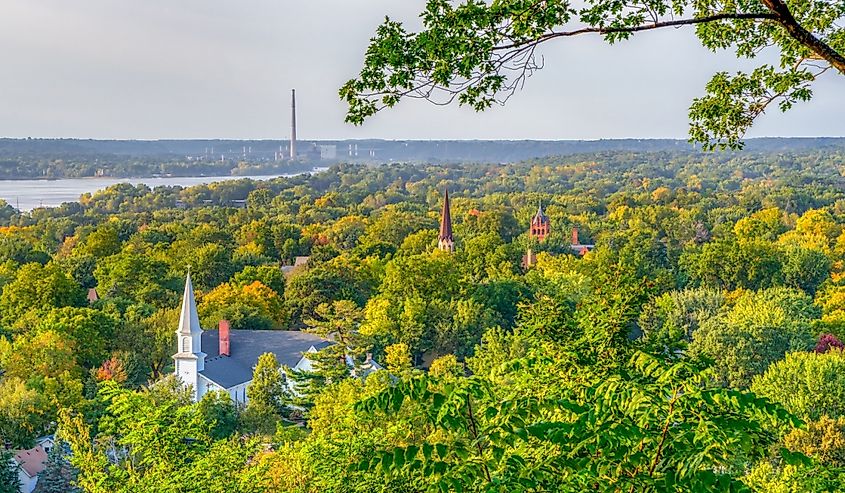
The Phipps Center for the Arts overlooks the river and runs theater productions, concerts, and rotating galleries year-round. Downtown Hudson remains walkable, with brick storefronts filled by locally owned businesses. San Pedro Café operates out of a restored firehouse and uses wood-fired ovens for Caribbean-inspired plates. Knoke’s Chocolates sells truffles, turtles, and small-batch ice cream a few doors down. Dunn Brothers Coffee delivers artisanal brews, warm community vibes, and locally roasted beans in a cozy setting.. The Spirit of the St. Croix Art Festival in September draws visual artists and glassblowers from across the state.
Stevens Point
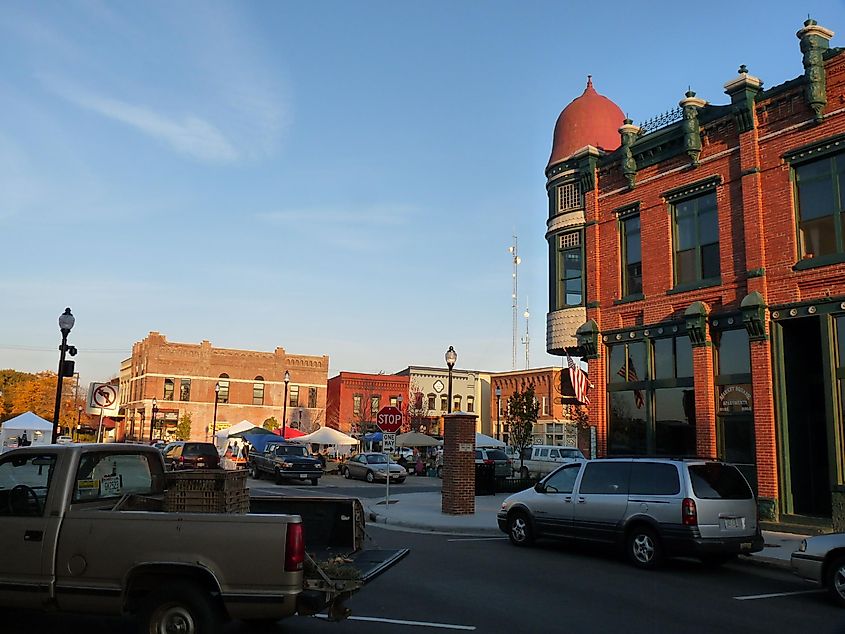
Stevens Point is the home of the Green Circle Trail, a 27-mile loop that encircles the city with boardwalks, forest paths, river crossings, and urban trailheads. It links downtown to wetlands, university land, and former rail corridors without leaving the city limits. The trail is maintained by a consortium of volunteers, local government, and UW-Stevens Point students, and its connectedness reflects how the town functions, compact, interwoven, and active year-round.
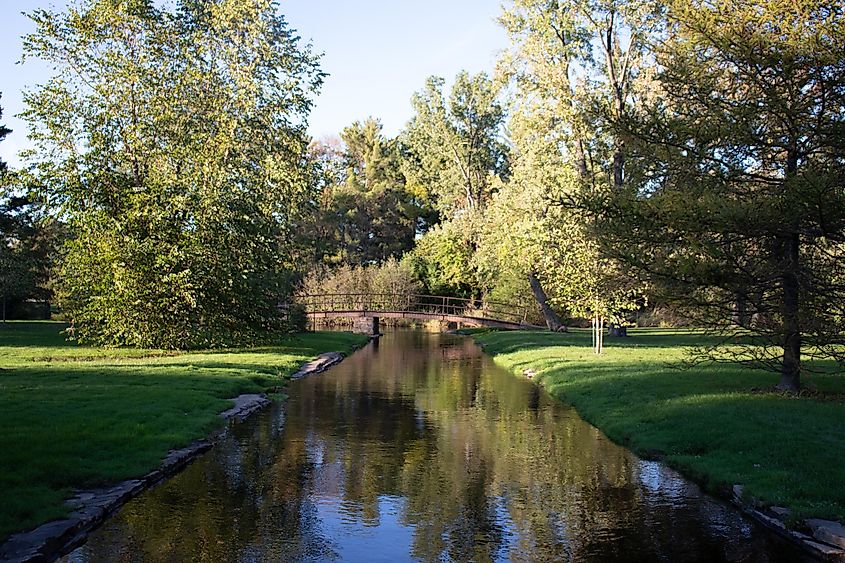
Main Grain Bakery uses Wisconsin-grown grains milled on-site and runs a community-supported bread share. Down the block, Emy J’s serves coffee beside a bike shop and sells scoops from the Chocolate Shoppe Ice Cream. The Riverfront Arts Center, inside a former Water Department building, curates rotating shows and workshops, often featuring local faculty or student artists. Schmeeckle Reserve, a 280-acre preserve on university land, provides direct trail access to Lake Joanis and wooden overlooks across cattail marshes. Riverfront Rendezvous, held over Fourth of July weekend in Pfiffner Pioneer Park, brings live music to a stage with the Wisconsin River as a backdrop.
Menomonie
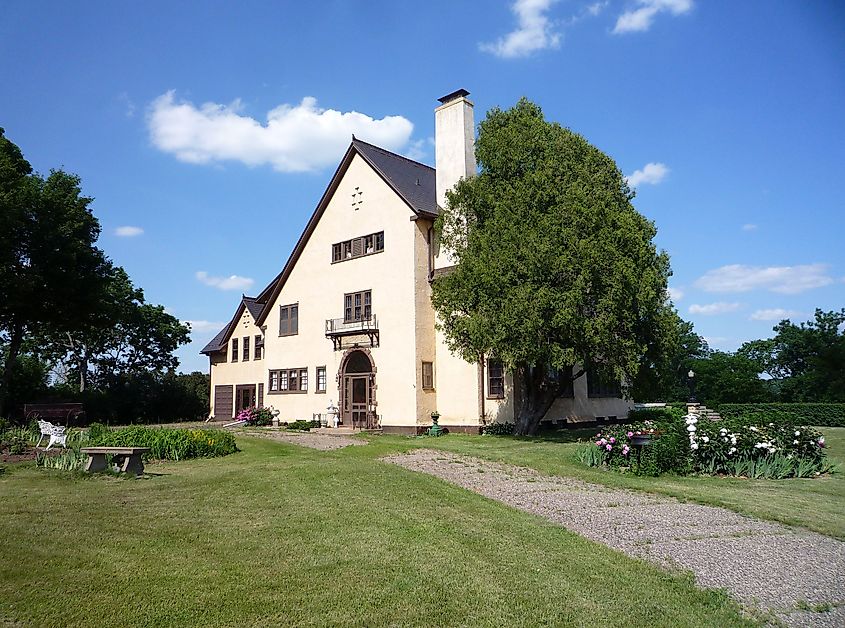
Menomonie built the Mabel Tainter Theater in 1890 with lumber wealth and Victorian excess, but kept it running with community buy-in and volunteers. It was named for the daughter of a sawmill magnate, and her death at 19 led to one of the Midwest’s most ornate surviving theaters, hand-stenciled ceilings, stained glass, and a working Steere & Turner pipe organ. The building still hosts weekly performances, lectures, and civic meetings.
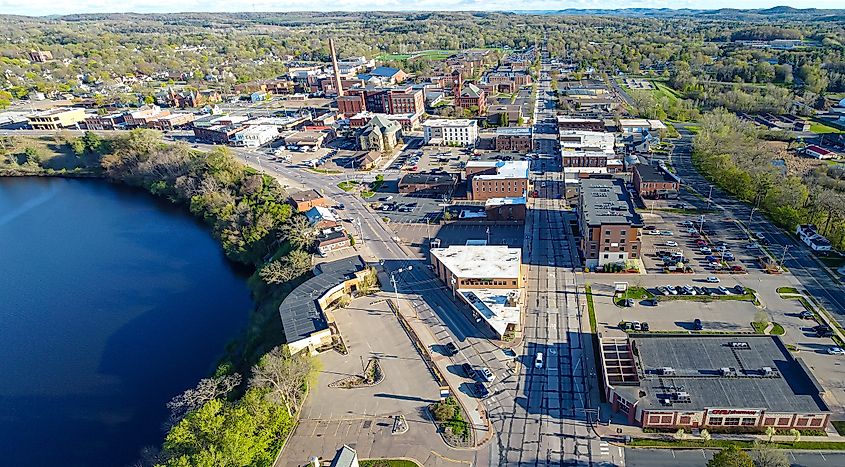
Lake Menomin dominates the town’s geography. The Red Cedar State Trail starts just south of the lake and runs 14 miles along an old rail line, passing sandstone bluffs and dairy farmland. Raw Deal on Broadway roasts coffee, pours wine, and holds live music without rearranging the furniture. Menomonie Market Food Co-op anchors the east side of downtown and features a rooftop pollinator garden funded through local grants. At the Russell J. Rassbach Heritage Museum, visitors pass through recreations of pioneer kitchens and Ojibwe lodges in a building maintained by local historical society members. The Dunn County Fair in July includes livestock shows and demolition derbies, but also flower arranging and 4-H robotics.
Chippewa Falls
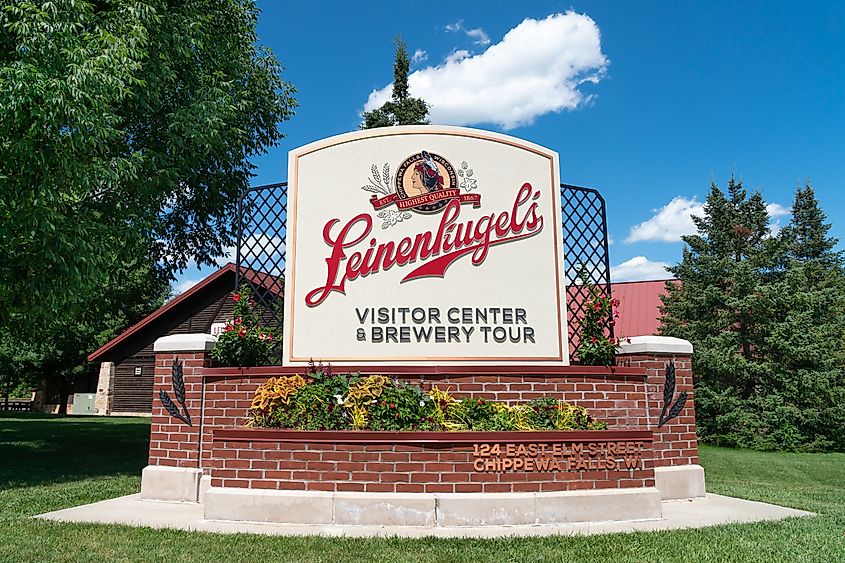
Chippewa Falls is where the Leinenkugel family started brewing beer in 1867 and never left. The Leinie Lodge, next to the original brewery, operates as part taproom, part museum, and part town living room. Fourth-generation family members still lead tours. The town’s relationship to the brewery isn’t ornamental, Leinenkugel’s remains one of the area’s largest employers, and most local festivals, fundraisers, and youth sports are backed by its sponsorship or presence.
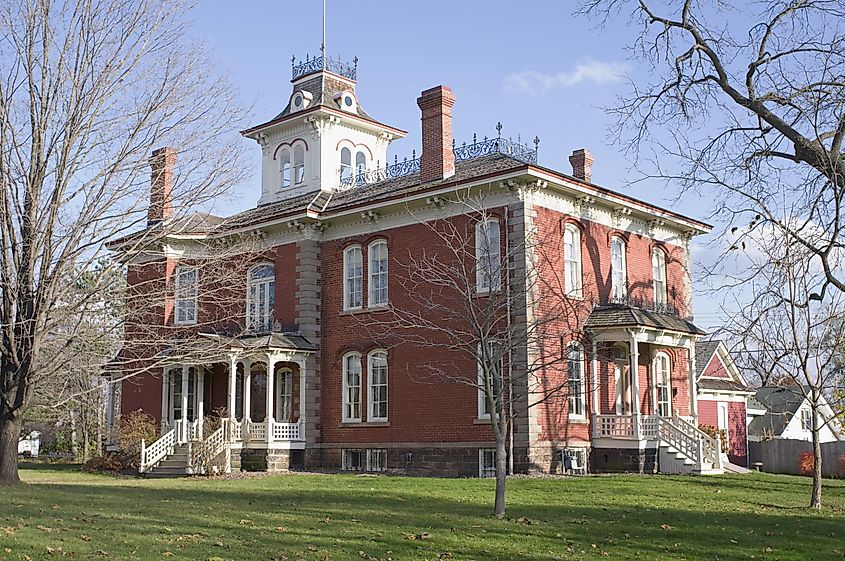
The Old Abe Trail connects downtown to Lake Wissota, crossing over the Chippewa River on a former rail bridge. Irvine Park, established in 1906, holds a free zoo and a band shell used for summer concerts and civic events. The Cook-Rutledge Mansion, once home to a lumber baron, opens for guided tours from June through August and stands as a preserved reminder of the town’s wealth during the logging boom. The Northern Wisconsin State Fair in July features draft horse competitions, antique tractors, and county-made pies judged by local bakers.
New Glarus
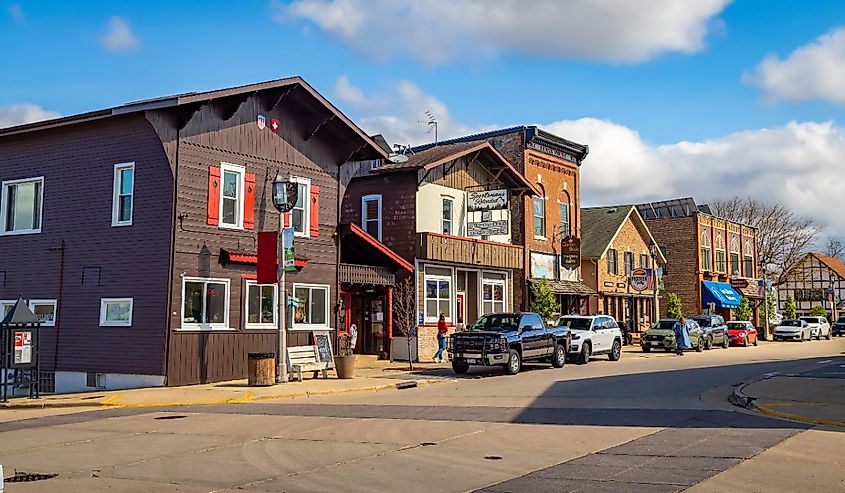
New Glarus was founded by Swiss immigrants in 1845 and remains defined by its origins. The town charter required all land be sold only to Swiss settlers for the first several decades, which shaped not just architecture but customs. Chalet-style rooftops, painted shutters, and alpine murals line 2nd Street, and most businesses still display signage in both English and German. It isn’t themed, it’s continuous. Many residents trace their ancestry directly to the town’s original colonists and maintain ties to Glarus, Switzerland, the town’s namesake.
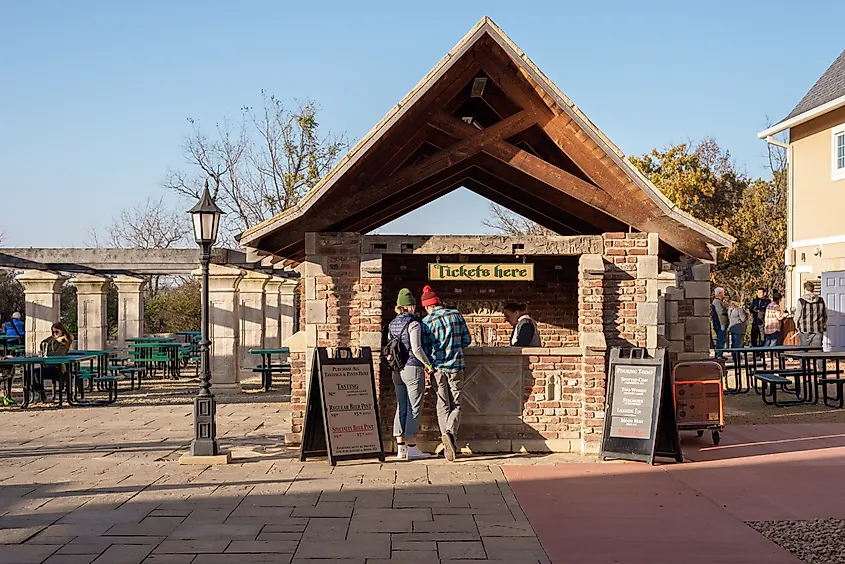
Puempel’s Olde Tavern dates to 1893 and still operates with original back bar panels and hand-painted wall scenes. The Swiss Historical Village Museum includes 14 buildings arranged to show 19th-century rural life, staffed by volunteers with generational ties to the town. The Sugar River State Trail begins at the edge of downtown and crosses converted rail trestles on its way to Monticello and beyond. The Wilhelm Tell Festival, held each Labor Day weekend, features a full outdoor performance in a natural amphitheater using local actors.
Bayfield
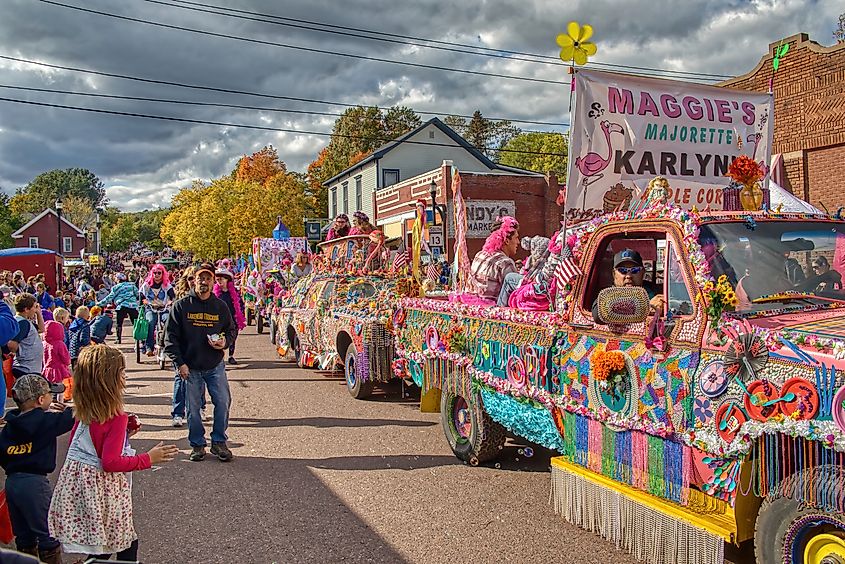
Bayfield sits at the edge of Lake Superior and serves as the primary gateway to the Apostle Islands, a cluster of sandstone islands known for their sea caves and old-growth forests. The town’s harbor functions year-round, sailing tours in summer, ferries to Madeline Island spring through fall, and ice roads or wind sleds in winter when conditions allow. Bayfield’s geography isolates it, but the isolation has built strong resident networks around preservation, local food systems, and public access to shoreline and trails.
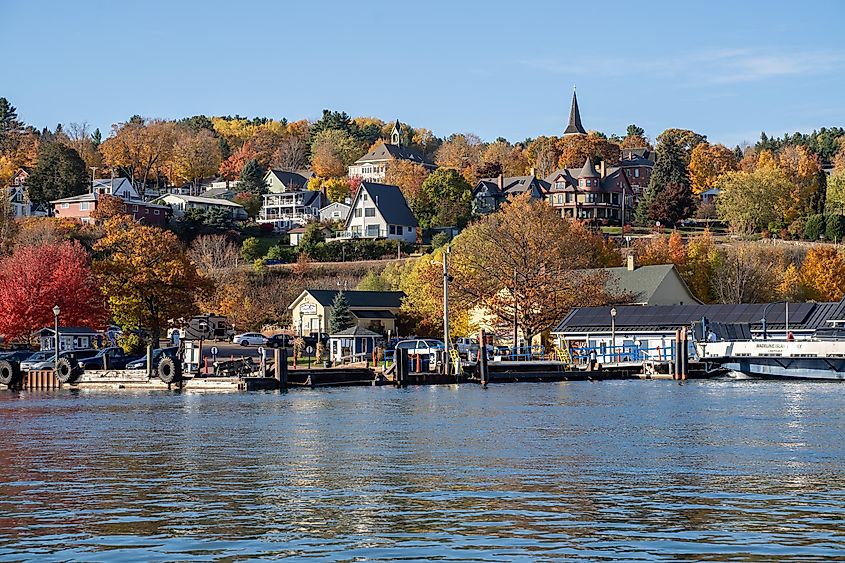
The Bayfield Apple Company operates just outside of town and sells cider pressed on-site, with varieties grown on terraced hills above the lake. For books and trail guides, head to Apostle Islands Booksellers (112 Rittenhouse Ave), and pair it with nearby Howl Adventure Center/Howl Downtown for outdoor gear and maps. For coffee, choose Wonderstate Coffee - Bayfield (117 Rittenhouse Ave), a specialty coffee bar and bakery now in the former Big Water space with a full espresso menu. The Bayfield Heritage Museum documents fisheries and Anishinaabe presence with oral history recordings and tools recovered from the lakebed. Each October, the Bayfield Apple Festival closes streets for parades, pie contests, and orchard tours.
Viroqua
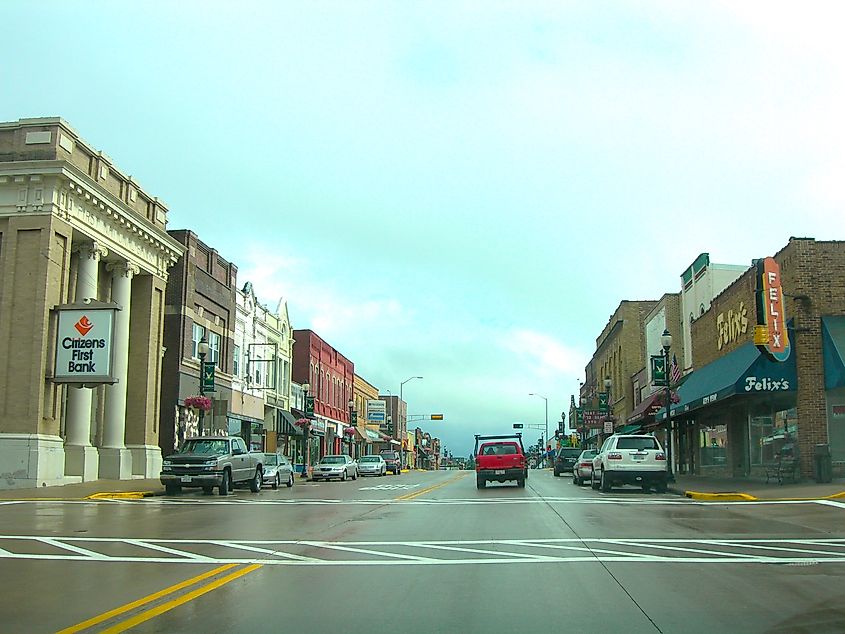
Viroqua is built on ancient sea floor uplifted by glaciers that never arrived. It sits in Wisconsin’s Driftless Area, land that escaped glaciation and remains marked by coulees, ridges, and mineral springs. This irregular terrain shaped the town’s layout and allowed small organic farms to flourish on hilltops and valleys, attracting back-to-the-landers in the 1970s and a second wave of food co-op founders and entrepreneurs in the 1990s. Viroqua’s agricultural base now blends Amish growers, CSA networks, and certified organic dairies tied directly to town grocers and cafés.
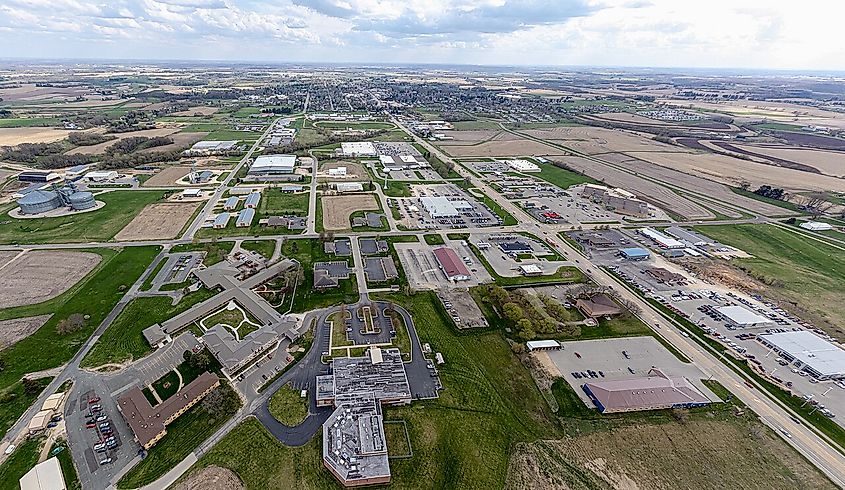
The Viroqua Food Co+op stocks locally grown produce and serves prepared meals from scratch, with indoor seating shared by farm owners and students from the Waldorf School. Driftless Books & Music operates out of a former tobacco warehouse with 250,000 titles and hosts poetry readings beside industrial presses. The Temple Theatre, built in 1922 and restored by local volunteers, books touring musicians and documentary films. Eckhart Park includes a skate park, ball fields, and walking paths used for May Day parades and after-school programs. Viroqua’s openness is structural, embedded in its school board decisions, its cooperative bylaws, and its preference for face-to-face transactions. Visitors are invited into that framework without pretense or performance.
Across these 11 towns, hospitality isn’t marketing; it’s muscle memory. Parades detour around grain silos, volunteers wire soundboards, and someone always saves a seat. You’ll find covered bridges, jump-boat mail, shipyards, orchards, co-ops, and art halls that open their doors because that’s the default. Choose any map dot and arrive hungry, for pie, for stories, for work to do, and you’ll leave with a name to remember and an invitation to return.

